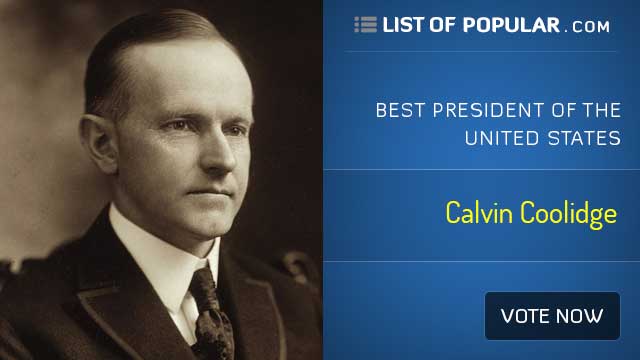The Best US President - Calvin Coolidge
The Early Years
John Calvin Coolidge was born on July 4, 1872, in Plymouth Notch, Vermont, to John Calvin Coolidge Sr. and Victoria Josephine Moor. Growing up in a small New England town, Coolidge learned the values of hard work, thrift, and community that would shape his political career.
Educational Background
Coolidge attended Amherst College in Massachusetts, where he distinguished himself as a student and became involved in local politics. His interest in law led him to pursue a legal career, and he graduated from Amherst in 1895 before studying law at the office of Hammond & Field in Northampton.
Political Beginnings
Coolidge entered politics at the local level, serving in various roles, including city councilman and mayor of Northampton. His commitment to fiscal responsibility and efficient government caught the attention of Republican leaders, propelling him into state politics. In 1912, he was elected to the Massachusetts State Senate.
Rise to Governorship
By 1918, Coolidge's reputation for effective governance had grown, leading to his election as the Governor of Massachusetts. His handling of the Boston Police Strike in 1919 brought him national attention when he declared, "There is no right to strike against the public safety by anybody, anywhere, any time."
The 30th President
Coolidge's ascension to the presidency was unexpected. In 1923, Vice President Warren G. Harding died suddenly, making Coolidge the 30th President of the United States. Known for his quiet and reserved demeanor, he brought stability and continuity to the presidency during a time of economic growth known as the "Roaring Twenties."
Economic Policies
One of Coolidge's most significant contributions was his commitment to laissez-faire economic policies. He believed in limited government intervention in the economy and advocated for tax cuts and reduced federal spending. Under his leadership, the country experienced economic prosperity, with a booming stock market and increased industrial production.
Foreign Affairs
Coolidge focused on diplomacy and international relations during his presidency. He signed the Kellogg-Briand Pact in 1928, which aimed to outlaw war as an instrument of national policy. While the pact was ultimately ineffective in preventing global conflicts, it reflected Coolidge's commitment to peaceful solutions in international affairs.
Legacy and Post-Presidential Years
Coolidge chose not to seek re-election in 1928, and he retired from public life after leaving the White House in 1929. His presidency is often associated with the economic prosperity of the 1920s, but it also faced criticism for contributing to the conditions that led to the Great Depression. Coolidge spent his post-presidential years writing and giving speeches, reflecting on his time in office and offering his perspective on governance and the role of government.
Final Years and Death
Calvin Coolidge lived a relatively quiet life in Northampton, Massachusetts, after leaving the presidency. He and his wife, Grace, were known for their hospitality, and Coolidge maintained an active presence in civic and charitable activities. He passed away on January 5, 1933, at the age of 60. His death marked the end of an era and left a legacy that continues to be debated and discussed in the context of American political history.
Conclusion
Calvin Coolidge's presidency is remembered for its emphasis on limited government, economic prosperity, and a commitment to peace. His leadership style, characterized by a calm and restrained demeanor, left a lasting impact on the nation during a time of significant change. Whether praised for his economic policies or criticized for their long-term consequences, Coolidge remains a notable figure in American history.

